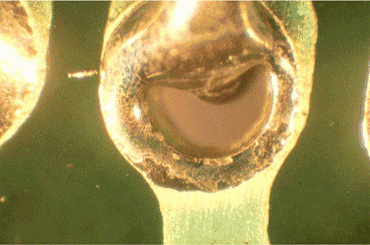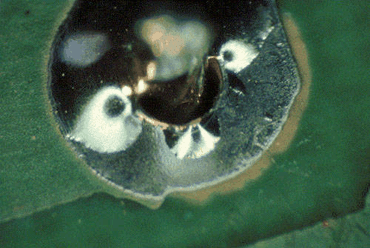Home > SMT Assembly News
The incomplete solder fillet is often seen on single-sided boards after wave soldering.
In Figure 1, the lead-to-hole ratio is excessive, which has made soldering difficult. There is also evidence of resin smear on the edge of the pad. It may be possible, even on this design, to improve the soldering performance by decreasing the conveyor angle from 6 to 4°. This reduces the drainage performance of the wave but can lead to the incidence of shorting. Reducing wave temperature has also been seen to overcome the problem.
As a guide, the hole-to-lead ratio is normally the lead diameter plus 0.010", which is the normal guideline for automatic insertion.

Figure 1: The lead-to-hole ratio here was excessive.
Incomplete solder fillets are caused by poor hole-to-lead ratio, steep conveyor angles, excessive wave temperature and contamination on the edge of the pads.
The example shown in Figure 1 is a result of burring on the copper pads. During either drilling or punching, the copper on the surface of the board was deflected in some areas, making soldering difficult. The same thing can occur if resin is smeared onto the edge of the pads.

Figure 2: Burring on the copper pads caused this defect.
Keywords:
SMT Reflow Oven, Lead free Reflow Oven, Reflow Oven Manufacturer, LED reflow oven, PCB Reflow Oven, Nitrogen Reflow Oven, Dual Rail Reflow Oven, China Reflow Oven, wave soldering machine, Dual Rail Wave Soldering Machine, Nitrogen Wave Soldering Machine, Wave Soldering Machine Manufacturer.




Contact: Mr Tommy
Phone: +86 13691605420
Tel: +86 -755-85225569
Email: tommy@flason-smt.com
Add: 94#,Guangtian Road,Songgang Street,Bao an District Shenzhen China